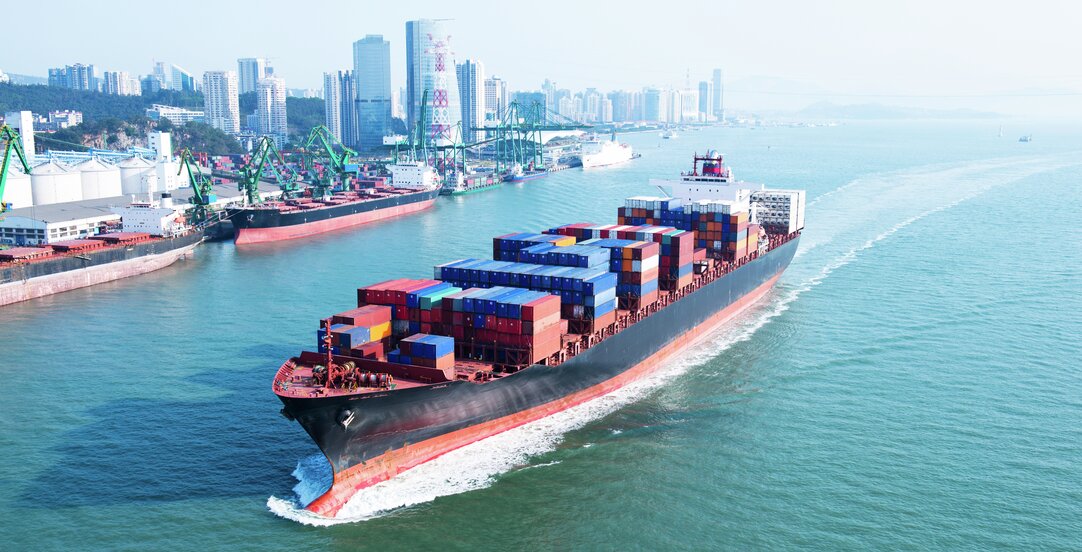Finance and operating leases in the Chinese market – key differences

Chinese sale and leaseback deals are now a well established financing option in the shipping sector. Whilst Chinese leasing companies have traditionally opted to go down the finance lease route, they are increasingly assuming more risk and opting for either a full operating lease arrangement or a hybrid structure adopting elements of both finance and operating leases.
Reading time 5 minutes
We discuss a number of key differences between finance and operating leases below.
Residual value risk
Under a typical "finance lease" arrangement, the lessee has an obligation to take title in the vessel for a specified price (the purchase obligation price) at the end of the charter period, with the lessee therefore assuming the residual value risk (or reward) in the vessel at term. Under an "operating lease" model the lessor retains ownership of the vessel at the end of the charter period, with the residual value of the vessel remaining on the lessor’s balance sheet. An operating lease may also be structured with a purchase option in favour of the lessee at the end of the charter period, but in general, risk and reward in the residual value remains with the lessor, though we have seen the purchase option terms at the end of some Chinese operating leases being structured in a manner which makes the price of exercising them (or the downside of not doing so) compelling.
Default payments
Upon the occurrence of a lessee default under a normal operating lease, the lessor will retain title and the lessee will usually only be liable to pay the charter hire which has accrued up to and including the termination date plus any enforcement costs and any losses suffered by the lessor as a result of not being able to obtain an equivalent charter rate or sale price (in case of disposal) from a third party, as compared to the charterhire that would otherwise have been payable for the residual charter period. The exact amount a leasing company may hope to recover in this situation will therefore greatly depend on the strength of the market at the time the lease is terminated. Under a finance lease however, the lessee would usually be liable for all of the principal amounts (and possibly certain of the interest element of hire, normally if so at a discounted rate) which would have been payable to the lessor had the vessel been chartered for the full term of the charter period plus any enforcement costs, with the lessee taking title in the vessel upon payment in full of the aforementioned amounts.
We have recently seen some discussions around the adoption of something of a "hybrid" structure in a default scenario, with the leasing house seeking to retain title in the vessel as well as seeking to recover all or a significant portion of outstanding hire right through until the end of the charter period. However, notwithstanding that this might possibly be commercially agreed between the parties in the heat of negotiation, it is questionable to what extent this may be enforceable, as under English law, such an arrangement would likely be regarded as a penalty and therefore be ultimately unenforceable. The fall-back position, would then be as described above for operating leases.
Charter periods
Finance leases traditionally ran for a period equivalent to the expected economic life of the vessel. Chinese finance leases however are typically for a shorter term with anywhere between 7-12 years being most common.
Operating leases have traditionally run for a period significantly shorter than the expected economic life of the vessel, though we have seen some Chinese operating leases run for periods similar to finance leases.
Interest payments
In a finance lease arrangement, interest is normally applied to the outstanding principal payable during the remaining charter period at either a fixed or floating rate.
In operating leases, interest is not typically applied in such a manner, with the leasing house's profit element/cost of funds in the deal being simply built into a blended charterhire rate payable during the charter period.
On or off balance sheet
Until recently, operating leases were an "off-balance sheet" arrangement for the lessee while finance leases appeared
"on-balance sheet". However, recent changes applicable to those lessees accounting under International Accounting Standards (i.e. the new IFRS16) will now also bring operating leases "on-balance sheet".
Lessees will therefore be required to show the "right to use" the vessel as an asset and their obligation to make charter payments as a liability on the balance sheet, though they will however be able to claim depreciation on the asset as well as to offset their liability to pay interest against profits.
Insolvency of the lessee
Depending on the vessel's flag and local law requirements, a finance lease may be recorded with certain ship registries (e.g. Marshall Islands and Liberia) as a security interest in the vessel with the lessor as owner being granted the status of a secured party. Recordation seeks to address a concern in relation to lease financings that the courts may deem a lessee under a finance charter to be the true owner of the vessel, with the lessor as registered owner having only limited remedies available to it in the case of lessee insolvency. Recordation (though somewhat untested in the courts) seeks to give a lessor (as owner) many of the same rights as a mortgagee would have in an insolvency situation, including, without limitation, priority in the waterfall of payments flowing from an insolvency of the lessee. An operating lease does not have this advantage, but there is a lower chance of a lessee under an operating lease being characterised as the true owner of the vessel, in which case recordation in this context is perhaps something of a moot point.
The extent to which a finance or operating lease structure is appropriate for lessors / lessees depends on a myriad of factors, not least the commercial drivers behind the transaction in question. The increasing willingness of Chinese leasing houses to look at alternative structures however demonstrates the developing maturity of this market and lessees would be well advised to look East when thinking about sourcing finance for upcoming projects.

